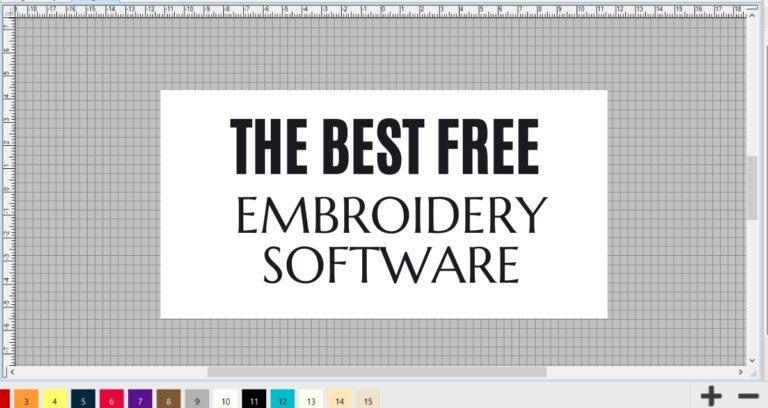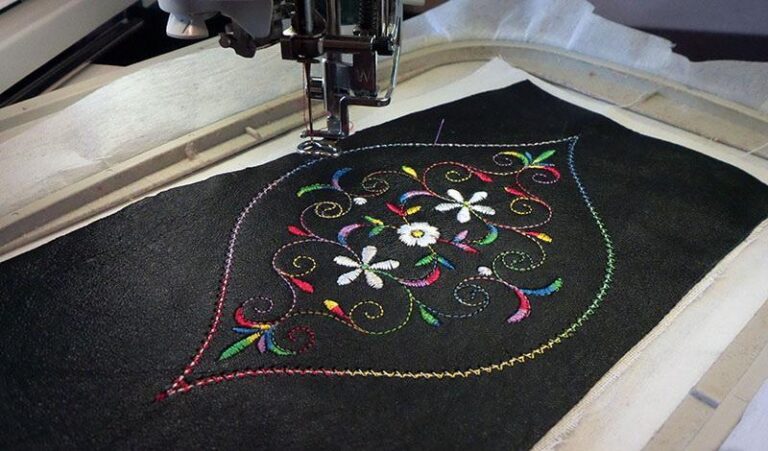Unlock Your PE Design Potential: 11 Essential Tips and FAQs
Introduction
Introduction to PE Design 11 Tips and FAQ PE Design 11 is a powerful embroidery software that offers a wide range of features and capabilities. Whether you’re a beginner or an experienced embroiderer, these 11 tips and frequently asked questions (FAQs) will help you get the most out of PE Design 11.
PE Design: A Comprehensive Guide for Beginners
PE Design: 11 Tips and FAQs for Beginners** Embarking on the world of PE design can be both exciting and daunting. To help you navigate this creative journey, here are 11 essential tips and answers to frequently asked questions: Tips:
1. Start with a simple design:** Don’t overwhelm yourself with complex patterns. Begin with basic shapes and gradually increase the intricacy.
2. Use high-quality thread:** The thread you choose will significantly impact the durability and appearance of your design. Opt for threads specifically designed for PE embroidery.
3. Stabilize your fabric:** Use a stabilizer to prevent the fabric from puckering or distorting during embroidery.
4. Test your design:** Before stitching on your final fabric, test your design on a scrap piece to ensure the settings are correct.
5. Adjust the tension:** The tension of the thread should be just right to prevent puckering or breaking. Experiment with different settings to find the optimal tension.
6. Use the right needle:** The needle size and type should match the fabric and thread you’re using.
7. Clean your machine regularly:** Regular cleaning will prevent lint and thread buildup, ensuring smooth operation.
8. Experiment with different stitches: Explore the various stitch types available on your machine to create unique textures and effects.
9. Use a design software: Design software can help you create and edit designs, making the process more efficient.
10. Join online communities: Connect with other PE designers to share ideas, ask questions, and get inspiration.
11. Practice, practice, practice:** The key to mastering PE design is practice. The more you experiment, the better you’ll become.
FAQs:
What is PE design? PE design stands for Punch Embroidery design, a technique that uses a computerized embroidery machine to create designs on fabric.
What types of fabrics can I use? Most fabrics can be used for PE design, but some, such as knits and stretchy fabrics, require special care.
How do I transfer a design to my machine?** Designs can be transferred via USB, memory card, or directly from a computer.
Can I create my own designs? Yes, you can use design software to create your own unique designs.
How long does it take to embroider a design? The time it takes depends on the size and complexity of the design.
Remember, PE design is a journey of exploration and creativity. By following these tips and answering your questions, you’ll be well on your way to creating stunning embroidered designs that will add a touch of personalization to your projects.
11 Essential Tips for Optimizing PE Design
11 Essential Tips for Optimizing PE Design, Physical education (PE) design plays a crucial role in fostering a positive and engaging learning environment for students. By incorporating these 11 tips, you can create a PE space that promotes physical activity, skill development, and overall well-being.
1. Prioritize Safety: Ensure that the PE area is free from hazards, with adequate lighting, non-slip surfaces, and proper equipment maintenance.
2. Maximize Space Utilization: Design the space to accommodate multiple activities simultaneously, utilizing vertical space and flexible equipment.
3. Create Zones for Different Activities: Establish designated areas for specific activities, such as a basketball court, soccer field, and fitness zone.
4. Incorporate Natural Elements: Bring the outdoors in by incorporating natural light, ventilation, and greenery to create a more inviting and stimulating environment.
5. Provide Storage and Organization: Design ample storage for equipment, supplies, and personal belongings to maintain a clutter-free and organized space.
6. Consider Accessibility Ensure that the PE area is accessible to all students, regardless of their abilities or disabilities.
7. Promote Inclusivity: Create a welcoming and inclusive environment by providing equipment and activities that cater to diverse needs and interests.
8. Encourage Collaboration: Design spaces that facilitate group activities and foster teamwork and cooperation.
9. Incorporate Technology: Utilize technology to enhance instruction, provide feedback, and track student progress.
10. Seek Student Input: Engage students in the design process to gather their perspectives and create a space that meets their needs.
11. Regularly Evaluate and Adjust: Continuously assess the effectiveness of the PE design and make adjustments as necessary to ensure it remains optimal for student learning.
Frequently Asked Questions (FAQs)
What are the key considerations for PE design? Safety, space utilization, activity zones, natural elements, storage, accessibility, inclusivity, collaboration, technology, student input, and ongoing evaluation.
How can I create a PE space that is both engaging and educational? Incorporate a variety of activities, provide opportunities for skill development, and utilize technology to enhance instruction.
What are some innovative design ideas for PE spaces? Vertical climbing walls, interactive fitness equipment, outdoor learning areas, and flexible spaces that can be reconfigured for different activities.
How can I ensure that the PE space is accessible to all students? Provide ramps, adaptive equipment, and designated areas for students with disabilities.
How often should I evaluate and adjust the PE design? Regularly assess the space and make adjustments as needed to ensure it remains optimal for student learning.
Frequently Asked Questions about PE Design
PE Design: 11 Tips and FAQs** Embarking on a PE design journey can be both exciting and daunting. To help you navigate the process seamlessly, here are 11 essential tips and answers to frequently asked questions:
Tips:
1. Start with a clear concept: Define your design goals and target audience to ensure your design aligns with your objectives.
2. Research thoroughly: Explore existing designs, industry trends, and user preferences to gain inspiration and avoid reinventing the wheel.
3. Use appropriate software: Choose software that meets your design needs and skill level. Consider factors such as ease of use, functionality, and compatibility.
4. Pay attention to typography: Select fonts that enhance readability, convey the desired tone, and complement the overall design.
5. Use color effectively: Colors evoke emotions and convey messages. Choose a color palette that aligns with your brand identity and resonates with your target audience.
6. Consider white space: Negative space is just as important as positive space. Use it strategically to create visual balance, improve readability, and draw attention to key elements.
7. Test and iterate: Don’t be afraid to experiment with different design elements. Test your designs with users to gather feedback and make necessary adjustments.
8. Keep it simple: Avoid cluttering your design with unnecessary elements. Focus on creating a clean, intuitive, and user-friendly experience.
9. Pay attention to accessibility: Ensure your design is accessible to users with disabilities by following best practices such as using high-contrast colors and providing alternative text for images.
10. Optimize for different devices: With the proliferation of mobile devices, it’s crucial to design for multiple screen sizes and resolutions.
11. Stay updated with trends: The design landscape is constantly evolving. Stay informed about emerging trends and best practices to keep your designs fresh and relevant.
FAQs
What is the difference between PE design and graphic design? PE design focuses specifically on the design of physical products, while graphic design encompasses a broader range of visual communication, including print, digital, and web design.
What are the key skills required for PE design? Strong understanding of design principles, 3D modeling software, materials science, and user experience (UX) design.
How can I improve my PE design skills? Practice regularly, seek feedback from peers and mentors, and stay updated with industry advancements.
What are the career opportunities in PE design? Product designers, industrial designers, UX designers, and design engineers are some of the common career paths.
How can I find inspiration for PE design?;Attend industry events, visit museums, explore online design communities, and observe everyday objects. Remember, PE design is an iterative process that requires creativity, technical proficiency, and a deep understanding of user needs. By following these tips and addressing common questions, you can embark on a successful and rewarding PE design journey.
Advanced Techniques for Enhancing PE Design
PE Design: 11 Tips and FAQs for Enhancing Your Designs** Embarking on the intricate world of PE design can be both exhilarating and daunting. To help you navigate this creative journey, here are 11 essential tips and answers to frequently asked questions:
Tips:
1 Master the Basics: Familiarize yourself with the fundamental principles of PE design, including stitch types, thread tension, and fabric properties.
2. Experiment with Digitizing Software:** Explore different software options to find one that suits your workflow and design style.
3. Use High-Quality Thread: Invest in premium thread that will enhance the durability and appearance of your designs.
4. Stabilize Your Fabric: Use the appropriate stabilizer to prevent puckering and distortion during embroidery.
5. Test Your Designs: Embroider a small sample before committing to a larger project to ensure the design stitches out correctly.
6. Consider Thread Color and Texture: Experiment with different thread colors and textures to create depth and interest in your designs.
7. Use Underlay Stitches: Add underlay stitches to provide support and prevent the fabric from sinking into the embroidery.
8. Adjust Stitch Density: Vary the stitch density to create different effects, such as shading or texture.
9. Use Specialty Stitches: Explore specialty stitches, such as satin stitch or appliqué, to add unique elements to your designs.
10. Practice Regularly: The more you practice, the more proficient you will become in PE design.
11. Seek Inspiration: Draw inspiration from online resources, books, and other embroiderers to expand your creative horizons.
What is the difference between PE and machine embroidery? PE design refers to the process of creating digital embroidery files, while machine embroidery is the physical process of stitching the design onto fabric.
What file formats are used for PE design? Common file formats include PES, DST, and EXP. * **How do I transfer a PE design to my embroidery machine?** Use a USB drive or memory card to transfer the design file to your machine.
Can I edit PE designs? Yes, most digitizing software allows you to edit and modify existing designs.
How do I troubleshoot embroidery problems? Check for proper thread tension, stabilizer usage, and needle size. If the problem persists, consult your machine’s manual or seek professional assistance. By following these tips and addressing common FAQs, you can elevate your PE design skills and create stunning embroidery projects that will impress and inspire.
Related Posts
Discover relevant articles, tutorials, and tips to improve your skills and explore new techniques.
Stay inspired and connected to our embroidery community.






